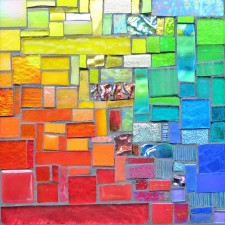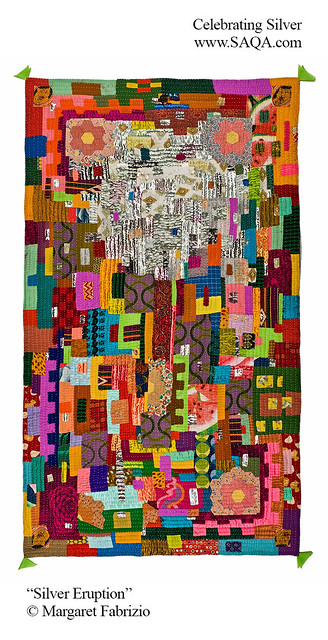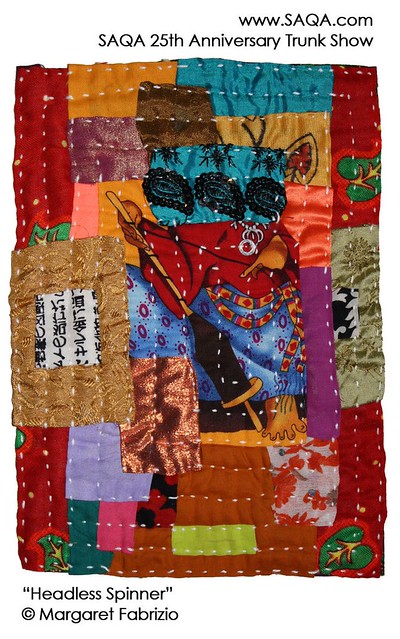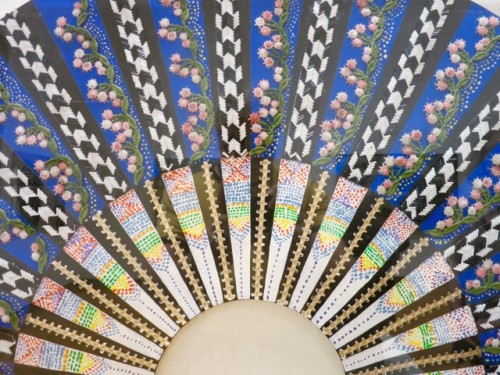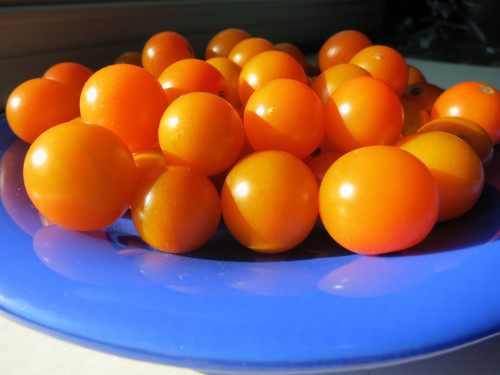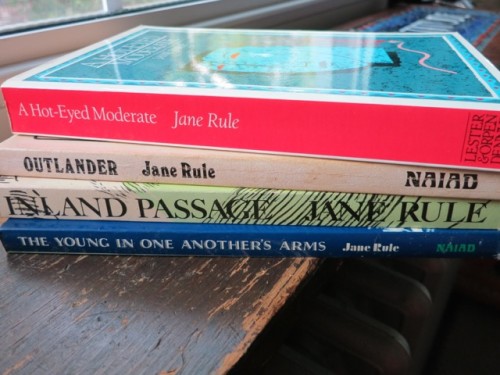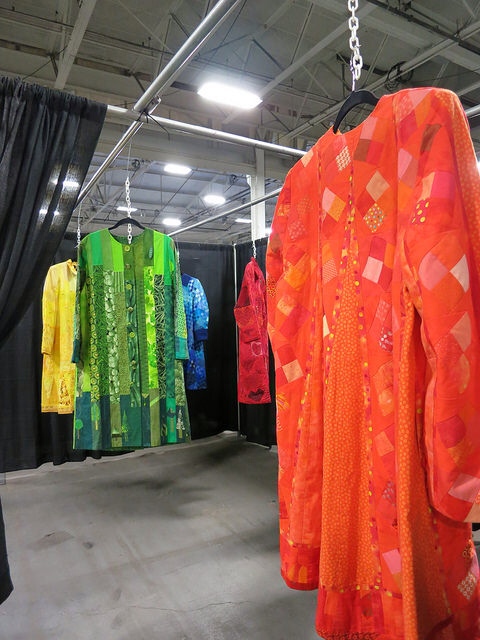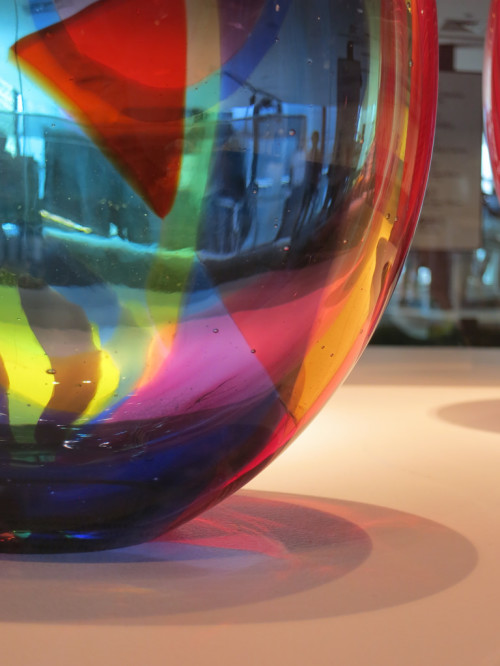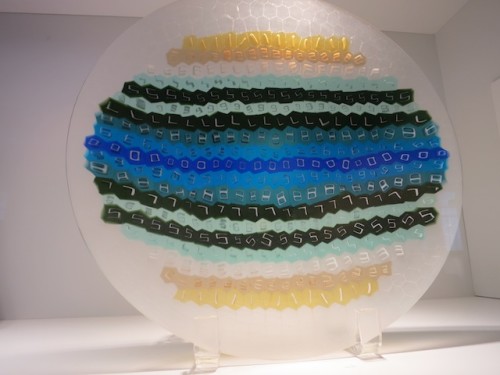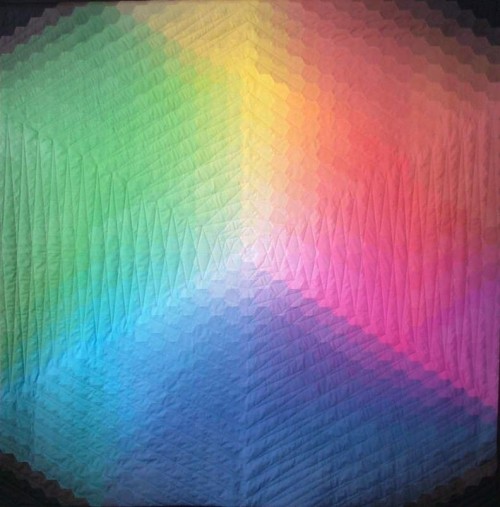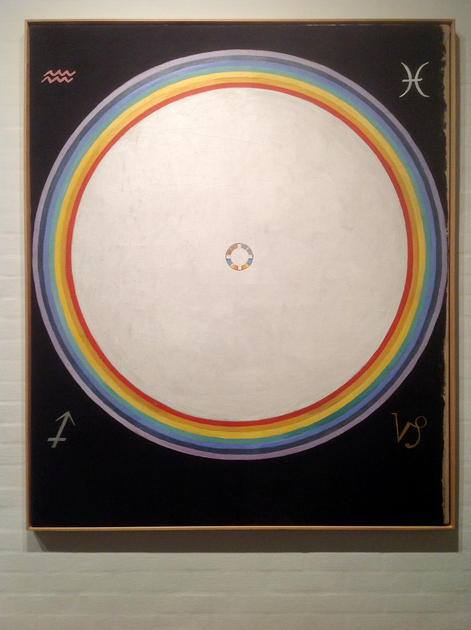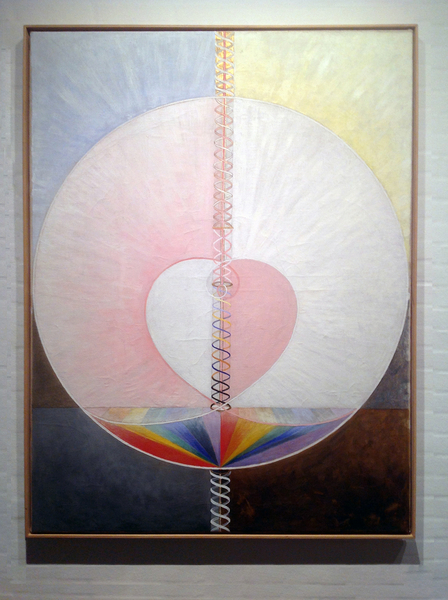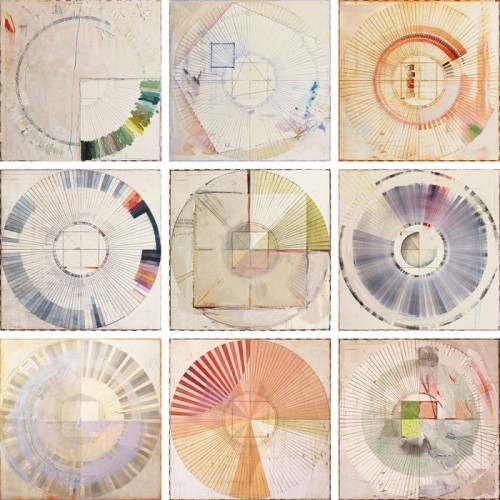I have a fondness in my heart for creativity that bursts out in more than one way. Margaret Fabrizio came to my attention by her quilts, but she is also a well known harpsichord player who played with the Grateful Dead, and had one of her collages on one of their album covers. I also dig curiosity, and she followed her curiosity when she first saw a kawandi quilt exhibition, Soulful Stitching, at the Museum of the African Diaspora in San Francisco. Kawandi are created by the African Siddi women of Karnataka, India, and Margaret Fabrizio traveled to India in 2012 in order to learn more, and has a series of Kawandi videos on YouTube from her visit and the process of learning.
The Siddi’s are descendants of enslaved Africans brought by the Portuguese to Goa on the West Coast of India between the 16th-19th Century, and who eventually escaped to their own diaspora communities in the mountains of Northern Karnataka. Siddi women collect worn out clothing and when they have enough for a quilt, buy a cotton sari and use it as the backing for the patchwork that they sew with a continuous running stitch. The corners are finished with Phulas, meaning flowers, a multi-layered triangle. It reminds me of those old fashioned photo corners for affixing snapshots to albums, and also half of a Log Cabin quilt block.
Found at An Event with Margaret Fabrizio: An Adventurous Life at the San Jose Museum of Quilts and Textiles.
Kawandi Adventures: Quilts by Margaret Fabrizio
Siddi Patchwork Quilts, Hand/Eye
